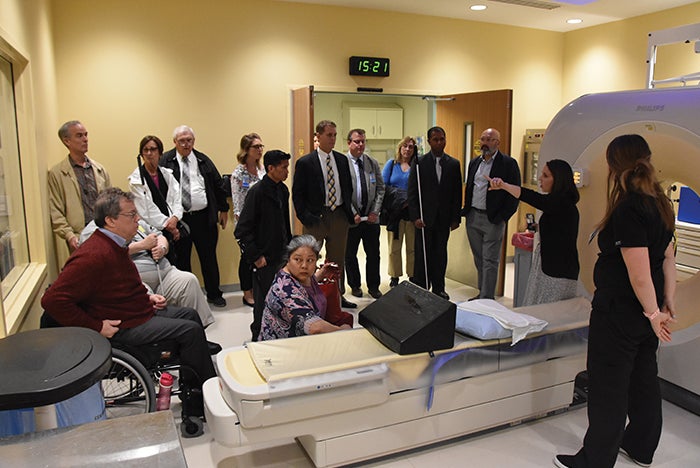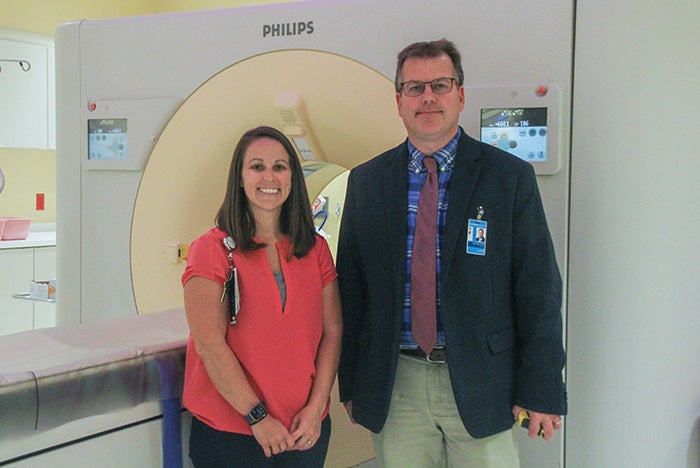U.S. Access Board sets standards for accessible medical equipment

Officials from the U.S. Access Board tour facilities at Indianapolis-based Eskenazi Health.
Images courtesy of Eskenazi Health
The U.S. Access Board issued its final standards for accessible medical diagnostic equipment back in January 2017, under the Affordable Care Act of 2010.
The agency proposed the standards for public comment in 2012. After the comment period, the Access Board formed an advisory committee to develop recommendations on how the standards should be finalized. The committee included representatives from disability groups, equipment manufacturers, health care providers and other stakeholders. The Access Board finalized the standards based on the committee’s recommendations and comments from the public.
The standards cover all types of medical diagnostic equipment, including exam tables and chairs, weight scales, radiology and mammography equipment, and other diagnostic tools. They cover any equipment that would require transferring a patient from a wheelchair or other aid and address transfer surfaces, support rails, armrests and lift devices. They also cover equipment that does not require transfer, according to an overview of the final standards.
The Access Board has organized its standards based on how patients use medical diagnostic equipment — whether they’re standing, lying down or sitting, or if they require transfer from a wheelchair.
Currently, the standards are voluntary for hospitals and manufacturers. Access Board officials say the Department of Justice (DOJ) may eventually make the standards mandatory under the Americans with Disabilities Act (ADA), but the DOJ has yet to launch any rulemaking to pursue that change. The ADA also stipulates that health care providers must provide patients who have disabilities with full access to services and facilities.
David Capozzi, executive director of the Access Board, notes that some additional work on the standards remains due to a lack of consensus on the minimum transfer height for equipment.
Concerns were raised on whether certain types of equipment could meet the preferred low height. In response, the Access Board set a range for the minimum height for a temporary five-year period. In the interim, the Access Board is conducting research on this issue and will update the specification based on the results.
The Access Board urges any hospital that needs help navigating the standards to check out its medical diagnostic equipment page on its website. Webinars also are available there, and the Access Board offers technical assistance and training on the standards.
“If anyone has a question about the standards or wants some advice on how to implement them, we’re here to help,” says Dave Yanchulis, director in the office of technical and information services.
Officials were happy to visit the health system in Indianapolis and even more delighted to see how seriously they’ve taken these standards without anyone forcing them to do so.
“The Access Board has been very impressed with Eskenazi Health’s commitment and knowledge of these guidelines,” says Gregory Fehribach, an Indianapolis attorney who serves on Eskenazi Health’s board and as a member of the U.S. Access Board.




